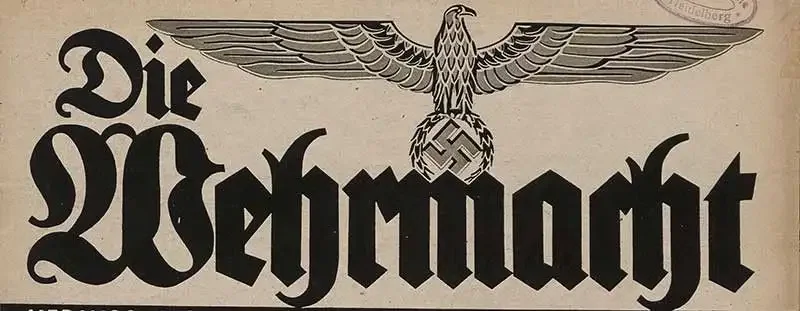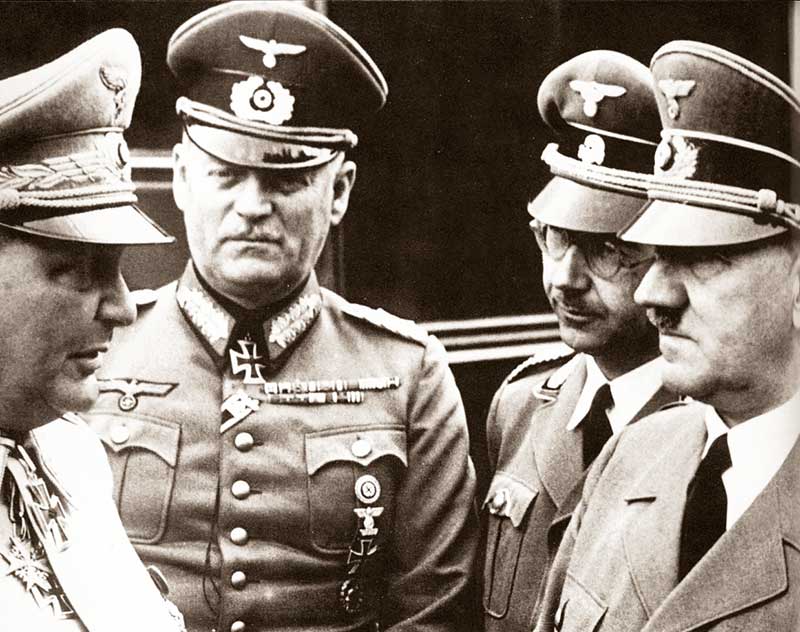- Military History
- Units & Divisions
- German Units
- OKW - Oberkommando der Wehrmacht (1939)

OKW - Oberkommando der Wehrmacht (1939) The High Command of the Armed Forces of Nazi Germany during WW II
For some time prior to his resignation in January 1938, Field Marshal Werner von Blomberg, the Reich Defense Minister and Commander-in-Chief of the German Armed Forces, had been attempting to create an armed forces high command. In this effort he had the full backing of Adolf Hitler and of his own subordinates in the Defense Ministry, General Wilhelm Keitel (chief of the armed forces office – “Wehrmachtamt”), and Colonel Alfred Jodl (chief of the national defense division – “Abteilung Landesverteidigung”).
Both the Army and Navy high commands actively opposed Blomberg in his endeavors. The Minister for Aviation and Commander-in-Chief of the Luftwaffe, General Hermann Göring, gave Blomberg's attempts more or less sincere support.
Upon Blomberg's departure, Hitler carried through the creation of an armed forces high command soon after he assumed command of the German armed forces in February 1938. He abolished the Defense Ministry and re-designated the armed forces office of that ministry as the Armed Forces High Command (Oberkommando der Wehrmacht - OKW). The OKW was to function as Hitler's military staff under his direct command and General Keitel was appointed its chief.
The organizational structure of the OKW
According to the mobilization plan that went into effect in late August 1939, the OKW was organized as follows:
- The office of the chief, which comprised Keitel and a few officers and clerks.
- The central administrative division which carried out the internal administration of the OKW.
- The armed forces operations office (Wehrmachtführungsamt) under Jodl, which comprised three divisions: national defense, armed forces communications and armed forces propaganda. The mission of the national defense division was to handle all questions concerning military operations. It kept the chief of OKW, and Adolf Hitler, informed of the military situation and coordinated and prepared the sections of Hitler's directives concerning military operations. The communications and propaganda divisions were concerned with the matters showed by their titles.
- The armed forces intelligence office (Amt Auslands Abwehr), the largest office in the OKW under Admiral Wilhelm Canaris. It controlled the collection and dissemination of the armed services of all clandestine military intelligence and conducted military sabotage and counterintelligence matters.
- The armed forces administrative office (Allgemeines Wehrmachtamt) which coordinated miscellaneous areas, including scientific research, prisoner-of-war matters and casualty statistics - common to the three services.
- The armed forces war production office (Wehrwirtschaftsamt) which had as its mission the procurement and allocation of all raw materials and production facilities needed for the war effort.
- Various small units such as military justice, legal and fiscal divisions made up the rest of the OKW.
Initial mission and the outbreak of war
During the time of virtual peace between February 1938 and the outbreak of war in September 1939, the OKW's primary mission was the preparation of an overall national defense plan. It issued several amendments to the then current plan of June 1937 and prepared the comprehensive national defense plan issued in April 1939. The OKW also took part in the planning for the occupation of Austria (Anschluss), Czechoslovakia, and Memel.

From the outbreak of the war until the summer of 1941, the OKW continued to function as Hitler's personal military staff, working in close cooperation with the high commands of the three services. From that time on, the OKW also developed into a supreme ground force headquarters. This development had started with the creation of the first armed forces commanders (Wehrmachtsbefehlshaber) in the Netherlands and in Norway. Both commanders received their orders directly from the chief of OKW according to Hitler's direction.
By the end of May 1942, the following headquarters were tactically subordinated to the OKW:
- Commander-in-Chief West (France and Belgium)
- Commander of German troops in Denmark
- The armed forces commanders in the Netherlands, Norway and the Southeast (Balkans)
- The armed forces commanders Ostland (Central Russia) and the Ukraine, who controlled the occupied areas in the rear of the German armies in Russia
- The Army of Lapland (Northern Finland)
- The Commander-in-Chief South (Italy and North Africa) was added to OKW's theaters in October 1942
The ostensible purpose of these assignments was to relieve the Army high command of some of its burdens to enable it to concentrate on the main ground combat theater in Russia.
Following the Allied invasion of Northwest Africa, more and more of the OKW theaters were drawn into combat operations. Now the OKW, on an increasing scale, assumed the functions of a ground force headquarters. The earlier function of the OKW as an overall advisory and coordinating staff for the Commander-in-Chief of the Armed Forces became more and more tenuous.
- {{#owner}}
- {{#url}} {{#avatarSrc}}
{{name}} {{/url}} {{^url}} {{#avatar}} {{& avatar}} {{/avatar}} {{name}} {{/url}} - {{/owner}} {{#created}}
- {{created}} {{/created}}























